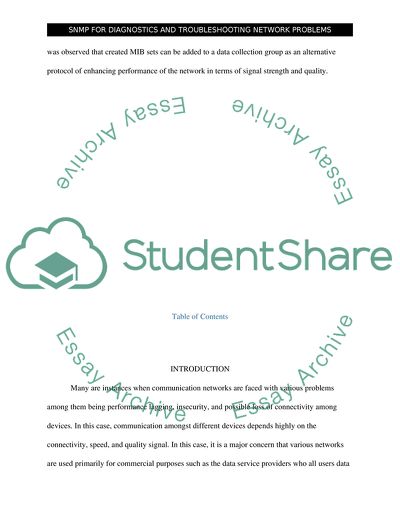Cite this document
(SNMP for Diagnostics and Troubleshooting Network Problems Research Paper Example | Topics and Well Written Essays - 4500 words, n.d.)
SNMP for Diagnostics and Troubleshooting Network Problems Research Paper Example | Topics and Well Written Essays - 4500 words. https://studentshare.org/information-technology/1878559-snmp-for-diagnostics-and-troubleshooting-network-problems
SNMP for Diagnostics and Troubleshooting Network Problems Research Paper Example | Topics and Well Written Essays - 4500 words. https://studentshare.org/information-technology/1878559-snmp-for-diagnostics-and-troubleshooting-network-problems
(SNMP for Diagnostics and Troubleshooting Network Problems Research Paper Example | Topics and Well Written Essays - 4500 Words)
SNMP for Diagnostics and Troubleshooting Network Problems Research Paper Example | Topics and Well Written Essays - 4500 Words. https://studentshare.org/information-technology/1878559-snmp-for-diagnostics-and-troubleshooting-network-problems.
SNMP for Diagnostics and Troubleshooting Network Problems Research Paper Example | Topics and Well Written Essays - 4500 Words. https://studentshare.org/information-technology/1878559-snmp-for-diagnostics-and-troubleshooting-network-problems.
“SNMP for Diagnostics and Troubleshooting Network Problems Research Paper Example | Topics and Well Written Essays - 4500 Words”. https://studentshare.org/information-technology/1878559-snmp-for-diagnostics-and-troubleshooting-network-problems.


